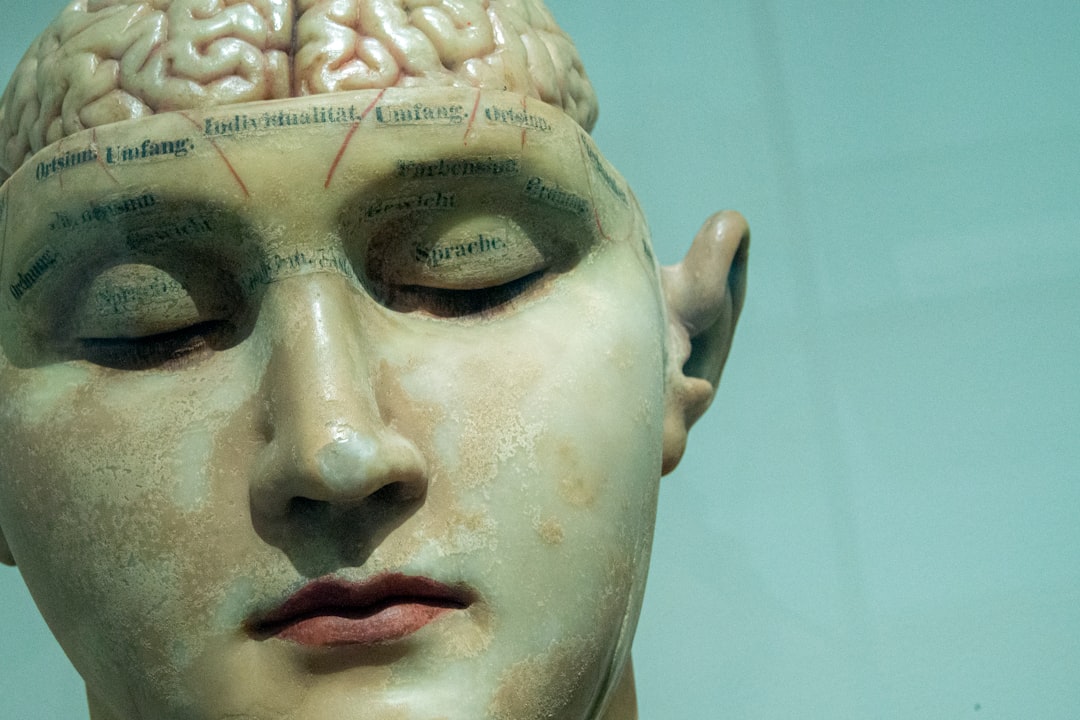Brain Interface Deciphers Inner Thoughts Accurately
Unlock the secrets of your mind with a groundbreaking brain interface that accurately deciphers inner thoughts. Discover more today!
Advancements in Brain Interface Technology
Introduction to Brain Interface Technology
Brain interface technology, also known as brain-computer interfaces (BCIs), has made significant strides in recent years. These systems establish a direct communication pathway between the brain and external devices, allowing for the interpretation of neural signals into actionable commands.
This technology holds promise for numerous applications, from aiding individuals with disabilities to enhancing human-computer interaction.
Interpreting Inner Monologues
One of the most groundbreaking advancements in BCI technology is the ability to interpret inner monologues with startling accuracy. Researchers have developed systems that can decode the brain’s silent speech, translating thoughts into text without the need for vocalization.
This capability is achieved through sophisticated algorithms and machine learning techniques that analyze brain wave patterns associated with specific thoughts.
Technological Innovations
Recent innovations have focused on improving the accuracy and speed of these interpretations. Advanced neural networks and deep learning models have been employed to enhance the system’s ability to differentiate between similar neural signals.
Additionally, non-invasive methods such as electroencephalography (EEG) have been refined to capture high-resolution brain data, making the technology more accessible and user-friendly.
Applications and Implications
The ability to interpret inner monologues has vast implications across various fields. In healthcare, it can provide a voice to individuals with speech impairments, allowing them to communicate more effectively.
In the realm of personal computing, it could revolutionize how we interact with devices, enabling hands-free operation through thought alone. Moreover, this technology raises important ethical and privacy considerations, as the ability to access and interpret thoughts necessitates robust safeguards against misuse.
Future Prospects
As brain interface technology continues to evolve, its potential applications are expected to expand even further.
Researchers are exploring ways to integrate these systems with augmented reality and virtual environments, creating immersive experiences controlled by thought. The ongoing advancements promise to not only enhance human capabilities but also redefine the boundaries of human-computer interaction.
Precision of Inner Monologue Interpretation
Revolutionary Brain-Computer Interface Technology
The development of a new brain-computer interface (BCI) has marked a significant breakthrough in the field of neurotechnology.
This innovative system is designed to interpret inner monologues with a level of precision that was previously unattainable. By analyzing brain activity patterns, the BCI can decode the silent speech of users, translating their thoughts into coherent text with remarkable accuracy.
Advanced Neural Decoding Algorithms
At the core of this technology are advanced neural decoding algorithms that leverage machine learning to interpret complex neural signals.
These algorithms are trained on vast datasets, allowing them to recognize and differentiate subtle variations in brainwave patterns associated with different words and phrases. As a result, the system can achieve a high degree of accuracy in translating thoughts into text, even when dealing with nuanced or abstract concepts.
Applications Across Multiple Domains
The precision of inner monologue interpretation opens up a wide range of applications across various domains.
In the medical field, this technology holds promise for patients with speech impairments, offering them a new means of communication. Additionally, it can be utilized in the field of mental health, providing insights into a patient’s thought processes and aiding in the diagnosis and treatment of conditions such as depression and anxiety.
Beyond healthcare, the technology has potential applications in fields like education and human-computer interaction, where it can enhance learning experiences and improve user interfaces by allowing devices to respond to users’ unspoken commands.
Challenges and Future Directions
Despite its potential, the technology faces several challenges that need to be addressed to ensure its widespread adoption.
Privacy concerns are paramount, as the ability to decode inner thoughts raises ethical questions about consent and data security. Researchers are actively working on developing robust encryption and consent frameworks to safeguard users’ mental privacy.
Future research is focused on improving the system’s adaptability to individual users, as variations in brain anatomy and thought patterns can affect accuracy.
By refining the algorithms and expanding the training datasets, developers aim to enhance the system’s precision and reliability, paving the way for broader implementation in everyday life.
Impact of Accurate Brain Interface Technology
Enhanced Communication for Individuals with Disabilities
The advent of brain interface technology capable of interpreting inner monologues with high accuracy offers transformative possibilities for individuals with disabilities. Those who are unable to speak or have limited mobility can now communicate more effectively, as their thoughts can be translated into text or speech.
This breakthrough not only enhances their ability to express themselves but also improves their quality of life by enabling more meaningful interactions with the world around them.
Revolutionizing Human-Computer Interaction
Accurate brain interface technology is set to revolutionize the way humans interact with computers. By directly translating thoughts into commands, users can operate devices without the need for traditional input methods such as keyboards or touchscreens.
This seamless interaction opens up new possibilities for more intuitive and efficient computing experiences, potentially leading to innovations in various fields such as gaming, virtual reality, and remote work.
Advancements in Mental Health Monitoring
The ability to accurately interpret inner monologues provides valuable insights into an individual’s mental state. This technology could be instrumental in diagnosing and monitoring mental health conditions, offering a non-invasive method to track changes in thought patterns.
By providing real-time data, healthcare professionals can tailor interventions more effectively, potentially improving outcomes for patients with conditions like depression, anxiety, and schizophrenia.
Ethical and Privacy Considerations
While the benefits of accurate brain interface technology are significant, they also raise important ethical and privacy concerns. The ability to access and interpret an individual’s thoughts necessitates stringent safeguards to protect personal privacy and prevent misuse.
It is crucial to establish clear regulations and ethical guidelines to ensure that this technology is used responsibly and that individuals’ rights are respected.
Potential for Cognitive Enhancement
Beyond communication and interaction, accurate brain interface technology holds the potential for cognitive enhancement. By understanding and optimizing brain activity, individuals could potentially improve their cognitive functions such as memory, learning, and concentration.
This aspect of the technology could lead to new educational methods and personal development strategies, empowering individuals to reach their full potential.
Enhancing Communication Through Brain Interfaces
Understanding Brain Interfaces
Brain interfaces, also known as brain-computer interfaces (BCIs), are systems that facilitate direct communication between the brain and external devices. These interfaces have evolved significantly, allowing for more sophisticated interactions and interpretations of neural signals.
The recent advancements in brain interfaces have opened new avenues for enhancing human communication, particularly for individuals with speech and motor impairments.
Interpreting Inner Monologues
The latest development in brain interfaces involves the interpretation of inner monologues with remarkable accuracy. This breakthrough technology can decode silent speech or thoughts, translating them into digital text or spoken words.
By capturing the brain’s electrical activity, these interfaces can discern specific patterns associated with internal dialogue, offering a new form of communication for those unable to speak.
Applications in Healthcare
In the healthcare sector, brain interfaces that interpret inner monologues have transformative potential. They provide a voice to patients with conditions such as amyotrophic lateral sclerosis (ALS), stroke, or locked-in syndrome, who may be unable to communicate verbally.
By enabling these patients to express their thoughts directly, brain interfaces can significantly improve their quality of life and facilitate better interaction with caregivers and loved ones.
Challenges and Ethical Considerations
Despite the promising capabilities of brain interfaces, there are several challenges and ethical considerations to address. Privacy concerns are paramount, as the ability to decode thoughts raises questions about consent and data security.
Additionally, the accuracy and reliability of these systems must be ensured to prevent misinterpretation of neural signals. Researchers and developers must work collaboratively to establish ethical guidelines and robust security measures to protect users.
The Future of Communication
The ongoing advancements in brain interfaces suggest a future where communication barriers are significantly reduced.
As these technologies continue to evolve, they hold the promise of not only enhancing communication for individuals with disabilities but also augmenting human interaction in everyday life. The potential to seamlessly integrate thoughts with digital platforms could revolutionize how we connect and share information.
FAQ
Q1: How can businesses leverage the new brain interface technology to improve workplace productivity?
A1: Businesses can utilize the new brain interface technology to enhance workplace productivity by implementing it in areas such as communication and task management. By accurately interpreting inner monologues, this technology can help employees articulate their thoughts more clearly and efficiently, reducing misunderstandings and streamlining collaboration. For example, during meetings, the technology can assist in capturing and organizing ideas in real-time, ensuring that key insights are not lost. Additionally, it can be used to personalize training programs by understanding individual learning needs and adapting content accordingly, thereby accelerating skill acquisition and performance improvement.
Q2: What are some common challenges businesses might face when integrating brain interface technology, and how can they overcome them?
A2: One common challenge businesses might encounter is ensuring data privacy and security, as the technology involves sensitive neurological data. To overcome this, companies should implement robust data protection protocols and comply with relevant regulations. Another challenge is the potential resistance from employees who may feel uncomfortable with the technology. To address this, businesses should focus on transparent communication, highlighting the benefits and providing thorough training to ease the transition. Additionally, technical issues such as integration with existing systems may arise, which can be mitigated by working closely with technology providers to ensure compatibility and support.
Q3: Are there any recommended books for business leaders interested in understanding and applying brain interface technology in their organizations?
A3: Yes, for business leaders looking to delve deeper into the implications of brain interface technology, “The Future of the Mind” by Michio Kaku provides a comprehensive overview of the potential and challenges of brain-machine interfaces. Another valuable resource is “The Brain That Changes Itself” by Norman Doidge, which explores the adaptability of the brain and how new technologies can harness this potential. These books offer insights into the science behind brain interfaces and practical guidance on how they can be integrated into business strategies to drive innovation and growth.
Takeaway
Ready to level up your skills and boost your career success? Take the first step today by enrolling in our online course, downloading our productivity tool, or subscribing to receive weekly career tips. Start your journey towards professional growth now! This move is widely interpreted as a strategic response to recent challenges.











Comments